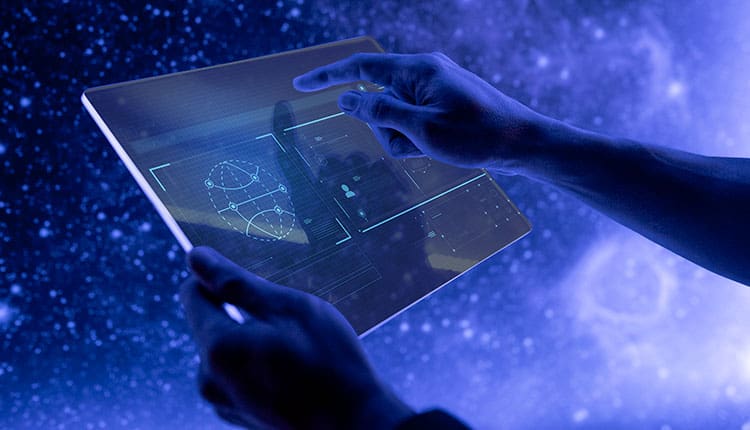By Daya Prakash, Founder, TalentOnLease
The impact of artificial intelligence (AI) on the job market has sparked intense conversations. Some argue that AI will catalyze job loss, leading to widespread unemployment and economic instability. In contrast, others contend that AI will be a boon, unlocking new opportunities and enhancing human productivity. This article explores this topic in depth to dispel the misconceptions surrounding AI’s role in the job market. Examining both sides of the debate can provide a nuanced understanding of how AI may reshape employment dynamics.

AI as a Job Killer
Those who argue that AI will be a job killer often cite examples of automation replacing human workers in various industries. Automation has transformed workplaces for centuries, from the industrial revolution to today. The fear is that AI-powered machines will outperform humans in numerous tasks, rendering specific jobs obsolete. For instance, self-driving vehicles threaten to displace millions of professional drivers, and advanced chatbots can replace customer service representatives.
The future of white-collar jobs is a significant concern due to AI’s ability to process data and perform complex tasks rapidly and accurately. For instance, AI-powered algorithms have shown increasing proficiency in data analysis, posing a potential threat to professions such as financial analysts, researchers, and even medical practitioners. As advancements in AI continue, it is natural to question whether such progress will lead to widespread job displacement.
AI as a Job Creator
While apprehensions regarding job displacement are valid, it is crucial to consider the potential of artificial intelligence (AI) to generate novel employment opportunities. Historical evidence has demonstrated that technological advancements, such as the internet and manufacturing automation, have resulted in job market transformations rather than eliminating jobs. AI is expected to follow a comparable path.
AI can enhance human capabilities by enabling critical thinking, creativity, and emotional
intelligence. As AI automates repetitive and monotonous tasks, employees can redirect their efforts toward more meaningful and strategic work. In this regard, AI functions as a productivity multiplier, enabling humans to achieve higher levels of output and innovation.
Moreover, the development and deployment of AI technologies necessitate a skilled workforce. Implementing AI systems requires data science, machine learning, and software engineering experts. The increase in demand for AI proficiency is accompanied by a corresponding need for professionals who possess the skills required to design, maintain, and enhance AI systems. This creates a significant opportunity for specialised job creation.
AI also has the potential to unlock entirely new industries and job categories. As AI algorithms evolve, new healthcare, transportation, and environmental sustainability applications emerge. These emerging fields will require diverse skills, creating new job opportunities for those who can adapt and upskill.
Navigating the Future: Human-AI Collaboration
Rather than framing the AI debate as a zero-sum game between job killer and creator, it is crucial to consider the possibilities of human-AI collaboration. The future of work will likely revolve around augmenting human potential with AI technologies rather than replacing humans altogether. Humans provide critical thinking, ethical judgment, and creativity in this symbiotic relationship. At the same time, AI contributes computational power, data analysis, and automation.
Organisations that embrace human-AI collaboration are poised to gain a competitive advantage. By combining the strengths of humans and AI, companies can achieve higher efficiency, innovation, and customer satisfaction. As artificial intelligence performs repetitive and data-driven tasks, employees can direct their attention toward problem-solving, relationship-building, and strategic decision-making, ultimately contributing more eminent value to their respective organisations.
The IT Industry as an Example
During the 1990s, the introduction of computers had a significant impact on the IT industry. At the time, many feared that it would lead to job losses. However, today we can see that this technology has created a 5.3 trillion USD industry, providing evidence that technological progress can actually create job opportunities and stimulate economic growth. Despite initial concerns about job loss, the IT industry experienced significant expansion, leading to a substantial increase in its revenues and contribution to the global GDP. This growth created various job opportunities, including software development, IT consulting, cybersecurity, and data analysis. It’s clear that introducing new technologies, like AI, can positively impact employment rates and economic prosperity.
Conclusion
The debate concerning whether AI is a job destroyer or a creator is simplistic. Although worries about job displacement are valid, history indicates that technological advancements are more likely to result in shifts in the job market rather than the complete elimination of employment prospects. AI has the potential to enhance human abilities, freeing up individuals to concentrate on higher-value tasks. Additionally, the development and implementation of AI will necessitate a skilled workforce, resulting in job creation in specialised fields.
Organisations must embrace the potential of human-AI collaboration to navigate the future
successfully. Businesses must recognise their strengths and limitations to utilise the potential of both humans and AI fully. This can be accomplished by fostering a culture of continuous learning, upskilling, and reskilling, enabling individuals to prosper in an AI-driven world while remaining adaptable and equipped with the necessary skills. In doing so, businesses can ensure that their workforce remains agile and prepared for new challenges.
As we move forward, we must acknowledge the transformative potential of AI to promote
productivity and innovation rather than exclusively viewing it as a job destroyer. By adopting this mindset, we can create a future where humans and machines work harmoniously, unlocking new possibilities and shaping a more prosperous society. To achieve this, we must cultivate a collaborative environment integrating AI with human decision-making and expertise, creating a virtuous cycle of innovation and growth. Ultimately, leveraging AI to enhance human intelligence and capabilities can create a sustainable and prosperous future for all.



